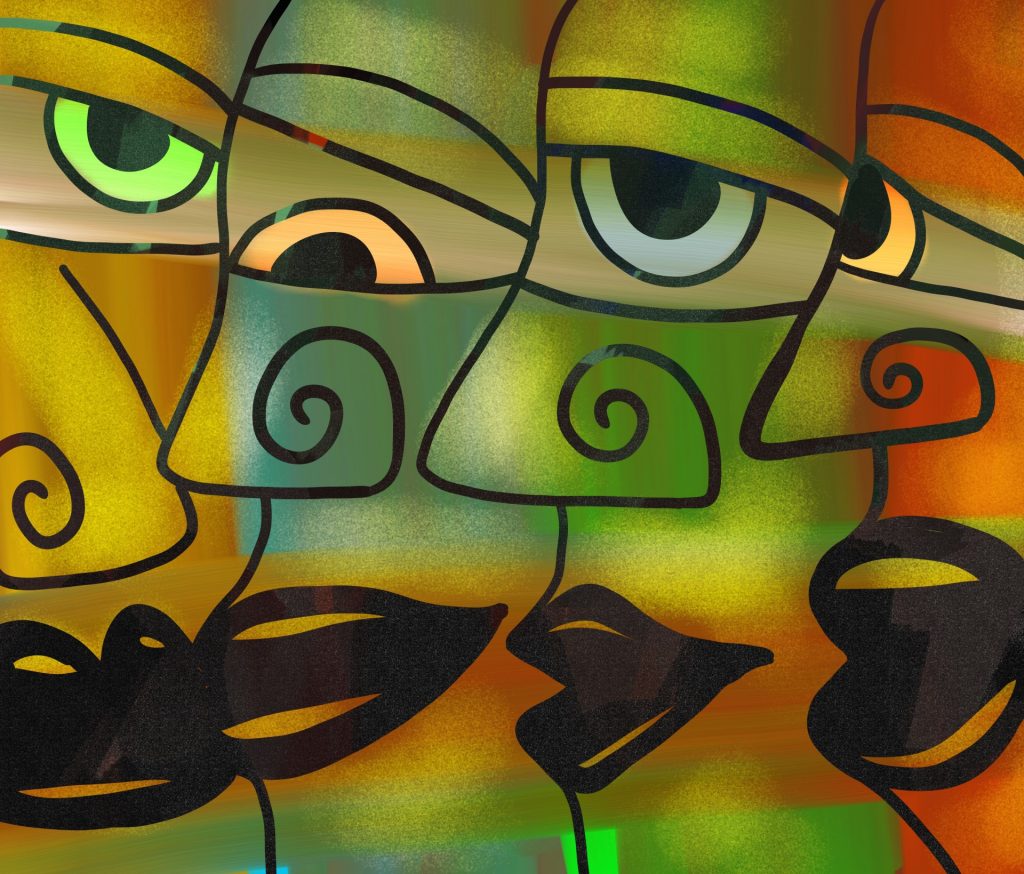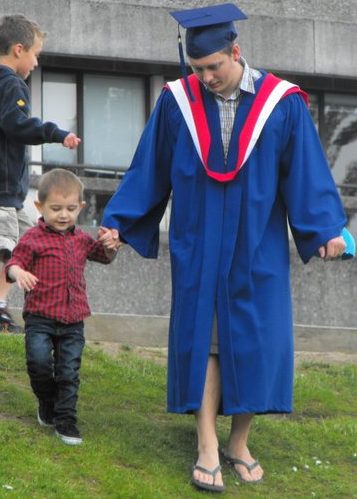
Hudson, Dawn. (2016). Diverse Faces [online image]. Retrieved from http://www.publicdomainpictures.net/view-image.php?image=114117&picture=diverse-faces
Competency Identifier
The Learner demonstrates the ability to work with a wide variety of professionals within a variety of mediums.
Education Technology 511
“E-waste: your ethical responsibility within your Ecosystem”
For Education Technology 511: Foundations of Educational Technology we were challenged to collaboratively create a case study and an accompanying unit of study to illustrate a certain theme presented in the course. We chose to illustrate schools as ecosystems. I worked with Osayma Al Nahlawi, Christy-Lynn Smith, and Regina Bestbier. This project illustrates working in a diverse learning community in two ways. First the group was comprised of people from three different fields of work. Second it was made up of people from all over the world. We worked collaboratively using Google docs and Blackboard forums. One of the biggest hurdles we had to overcome was time zone differences. We needed to carefully plan times we could meet via Skype or synchronously over Google Docs to discuss our project. Between the different times zones and conflicting schedules we were able to meet enough to be successful. One strategy we used to help with the time conflict is to break off into smaller groups and report back to the main group in Google Docs. Another significant challenge was creating our unit for English 12 as two of our group members were not teachers. We were able to overcome this challenge through careful peer editing and meeting often to go over the different ideas and curriculum. This experience set me up for success in all the group projects required throughout the remainder of the program. On a larger scale this experience helped me to learn how to work collaboratively within a curriculum with non-teacher professional such a Speech Language Pathologists, Counselors, and Occupational Therapists.
“E-waste: your ethical responsibility within your Ecosystem” video walk through
Education Technology 565
“Learning Management System Platform Evaluation and Proposal for Pacific High School”
For Education Technology 565: Learning Technologies: Selection, Design and Application we were tasked with collaboratively creating a proposal for a hypothetical school that was looking to expand their student base by moving some courses online. We were hired as ‘consultants’ to examine their situation and come up with a few recommendations for a Learning Management System. My group was composed of Craig Brumwell, Shafali Hamir, Jason Harbor, and, Sylvain Menard. The reason I chose this example as an artefact is that it was a particularly challenging project. We still had he the same time zone issues and the interdisciplinary perspectives to navigate, but that is not what made this so challenging. Each group member had very different viewpoints on how to meet the school’s needs. As the LMS choices were numerous, we had a very difficult time deciding on one single recommendation as the assignment asked for. Most of our collaboration was done via Skype, with Google Drive used as a creative space to share our progress. We met on numerous occasions and often ended up in heated debate about the merits of each LMS. We were spinning our wheels trying to argue for one LMS to fit all of the needs of the school. In the end we decided on a compromise of looking at the school’s immediate needs and offer a suggestion for that and at the future needs and offer a recommendation for then. In the end our project was improved through compromise, and we created a much more comprehensive recommendation for the school. Working with this group taught me the importance of compromise and that often compromise leads to a more complete solution. For example I am currently working with a Complex Care and Intervention team comprised of a social worker, several counsellors, several psychologists, a school counsellor, a classroom teacher, parents, a resource teacher, and a Vice Principal. From my experiences with the Education Technology program I know that collaboration and compromise will often lead to a more complete solution, and that is the goal for our student.
Education Technology 532
“Media Literacy in the Canadian Classroom: thinking critically about media literacy skills”
For Education Technology 532: Technology in the Arts and Humanities Classroom we were grouped together and asked to research, and write an essay with a focus on building an annotated bibliography. We collaboratively wrote “Media Literacy in the Canadian Classroom: Thinking Critically about Media Literacy Skills.” The group consisted Kim Hass, David Thuss, Neil Busby, Sarah Richer, and myself. As a group we came together with very diverse backgrounds, and from different work settings. We were all interested in searching for resources that related to general media literacy in a range of learning environments, as well as how media is transforming our language. I wanted to include this artefact as it shows working in a diverse learning community in a very different way than the previous artefacts. Working collaboratively on a piece of cohesive writing is very different than creating a website or blog where each group member is responsible for their own section. One of the challenges of this project was to get our writing styles to mesh. We spent long hours rewording things. I found that this kind of collaboration has helped me professionally in an unexpected way. Last year I edited a book titled British Columbia’s New North. In my interview I was able to talk about my Master’s experiences with peer editing and group work such as this project. I worked closely with the author Ramona Materi and her assistant. The skills I learned working on this group project directly correlated with working with the team editing this book. It went very well and this year I have been contacted to help with a new project.
